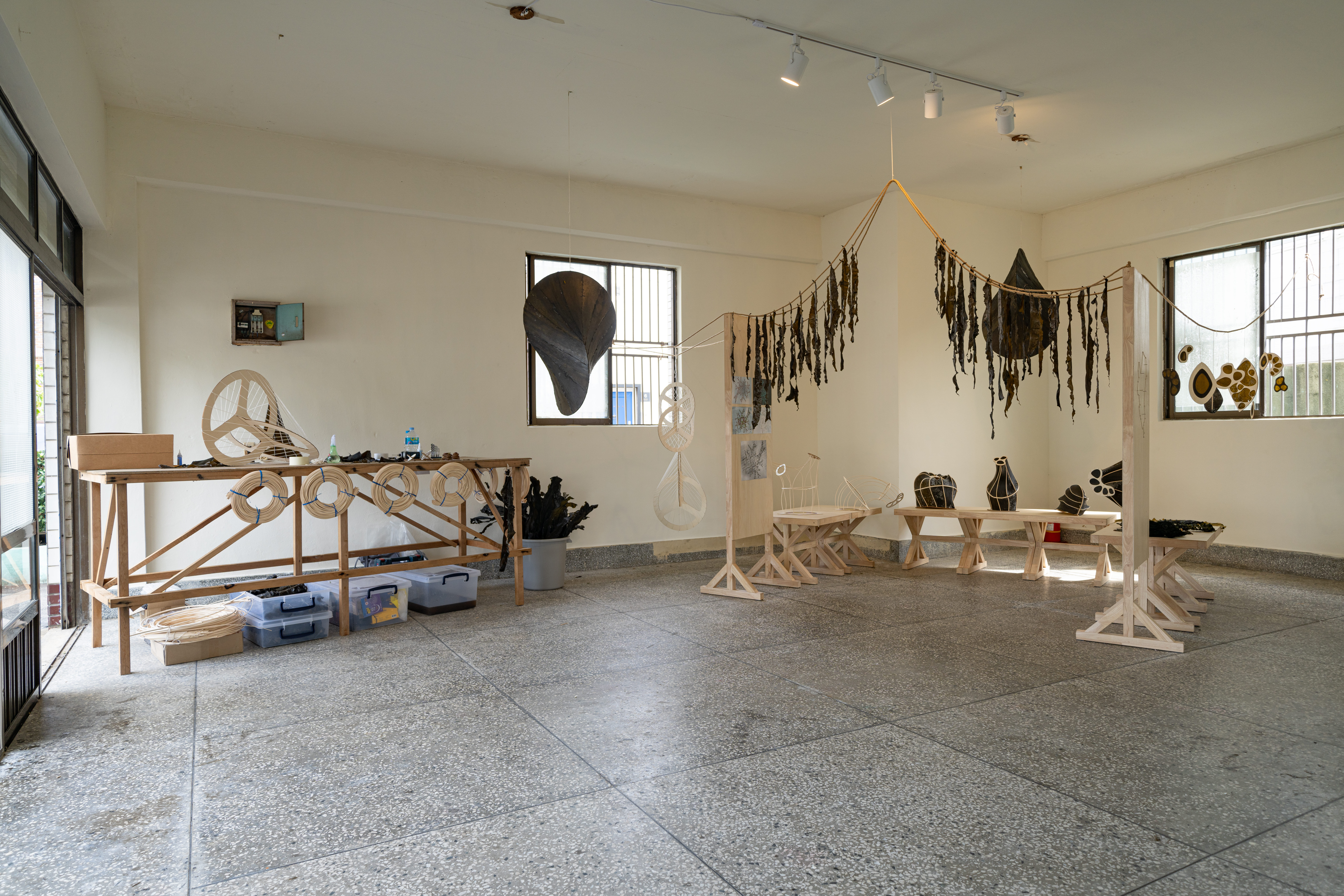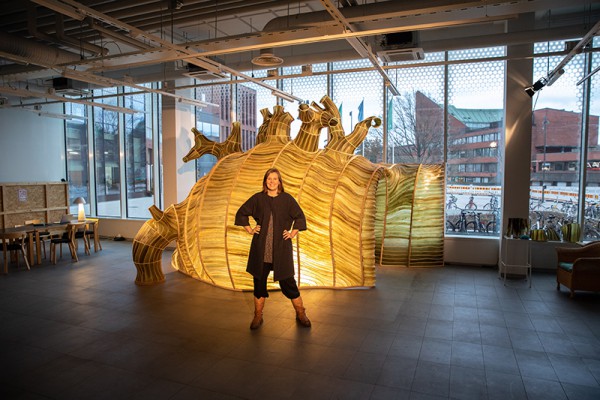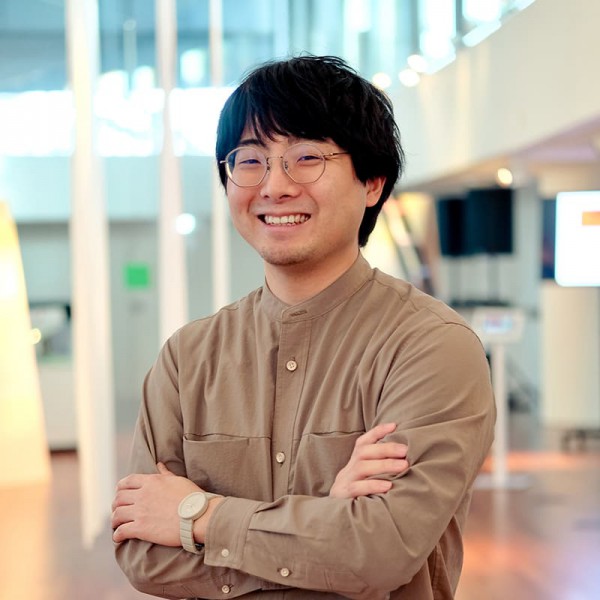Department of Seaweed Studio
2023, Gijang kelp, rattan, wood, workshop tools, drawings, research about local algae culture, Dimension variable. Commissioned by Sea Art Festival 2023

Description
It is said that during the Goryeo Dynasty (918 — 1392), Koreans discovered that whales would eat seaweed after giving birth to recover their strength, and it became a custom to feed seaweed soup to mothers. Even today, on birthdays, along with the congratulatory wishes, the question follows, "Did you eat seaweed soup?" It is the first dish cooked when a new life is born and invokes care, affection, and dedication in the Korean psyche.
In Gijang, this tradition is even stronger: According to research by Gijang County, when a child is born in the region, seaweed soup is served to the family on the ceremonial table every day for a week and every week for a month, to wish for the child’s health and well-being and give strength back to the mother after giving birth.
This installation and studio creates a special place for the seaweed that shaped the local cultures, next to Halmae Shrine and Halbae Shrine, an acknowledgement of a community’s multispecies entanglements and relations. It is a kind of ‘seaweed shrine’.
The artists exploring this natural resource aim at healing the damage that has already been caused and, in a synergic system, produce a material to be used on land with a low impact. However, it is crucial not to view seaweed as another resource to be extracted. In imagining future possibilities, Julia Lohmann and Kayoung Kim take on a regenerative mindset, rather than an exploitative one. The organism is seen as an embedded part of the ecosystem, and it is considered in all its life cycle. Through interdisciplinary, hands-on, creative and holistic approaches the “Seaweed Shrine” showcases new ways of engaging with a local organism and to explore its potential to restore and create.
As members of the Department of Seaweed - an interdisciplinary group dedicated to exploring the cultural, environmental, and sustainable aspects of seaweed and kelp, founded by Julia Lohmann - the artists delve into the vibrant stories of the people in the area, where seaweed and kelp play a significant part in their lives. It explores their relationship with the resources they obtain from nature and the material and psychological impact it has on their daily lives.
The collected materials, exhibited alongside the kelp sculptures, create an immersive experience that allows the public to engage with local stories and evoke a range of emotions.



